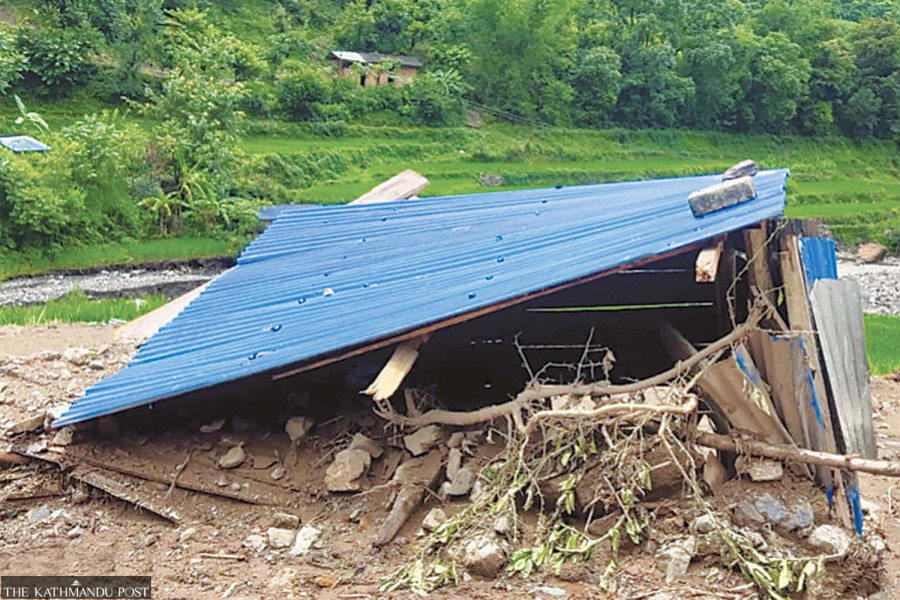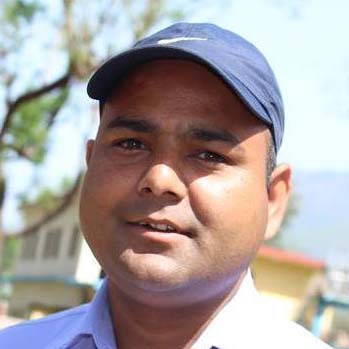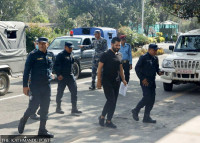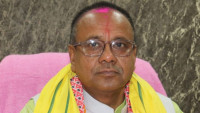National
Twenty-eight earthquake-affected settlements in Jajarkot and Rukum West at risk of landslides
District disaster management committee calls for speedy relocation of 22 settlements in Jajarkot and six in Rukum West due to looming disaster risks.
Krishna Prasad Gautam
The family of Sher Bahadur Pun of Athbiskot municipality-12, Rukum West, was living in a temporary shelter since their home was destroyed by an earthquake in November last year.
On July 18, continuous rainfall caused flooding in the Gijagar and Tatopani rivers, killing three girls, including Pun’s two granddaughters, as they slept in the temporary shelter. The floods also swept away three other sheds and two portable huts.
Dilli Budhathoki, 40, who got caught in the flood is still missing. In the last week of June, a house collapse at Kadagaun in ward 1 of Chhedagad Municipality in Jajarkot, injured eight people.
Since the November 3, 2023 earthquake, dozens of settlements like Jhinchaur and Kadagaun have been living in fear of landslides and floods. Ravi KC, the mayor of Athbiskot, said that 98 families were displaced by landslides in wards 11, 12 and 13, and 1,557 families are still at risk.
Twelve families from ward 3 of Junichande Rural Municipality in Jajarkot, have been relocated after mudslides began falling from the hills above their village. Umakant Adhikari, the chief district officer, said that the displaced villagers are currently living under tarpaulins in an open area near the village.
Last month, 16 families from wards 1 and 3 of Bheri municipality were also moved to safer locations. So far, two people have died in landslides and floods in Jajarkot. The district disaster management committee has recommended the immediate relocation of 22 earthquake-affected settlements in Jajarkot and six in Rukum West.
According to Adhikari, the National Disaster Risk Reduction and Management Authority (NDRRMA) has also conducted studies on the situation. The study identified several high-risk areas, including Sagachaur, Libal, and Detkule in Chhedagad; Tolkhana and Leikham in Barekot; Chaur, Chaupani, and Maide in Bheri Municipality; and Dunagara, Luppakha, and Bhius in Shivalaya. Additionally, settlements such as Chiuri and Pali in Nalgad Municipality are also at risk.
In Rukum West, high-risk areas include Kalapahira and Kuridhara in Athbiskot Municipality, as well as Chainabagar and Gajetakuri in Sanibheri Rural Municipality. Immediate relocation is recommended, Hari Prasad Pant, chief district officer of Rukum West, said.
Ram Bahadur Mahara from ward 1 of Bheri Municipality shared the fear of having to stay awake during the night when it rains, as landslides frequently occur from the hills above. “When it rains, we fear the temporary shelter might get buried. We barely survived the earthquake, but now we constantly worry about how to protect ourselves from the landslides,” he said. Sunday’s incident worked as evidence to Mahara’s remark.
Hans Bahadur BK of ward 4 of Nalgad Municipality described the challenges of living in a temporary shelter. “Even a small amount of rain soaks our food and clothes. The landslides have started just below our shelter, and we fear that one day it might wipe out our entire settlement,” he said.
Bimala Pun Magar from Jhinchaur in ward 12 of Athbiskot Municipality, expressed her concerns about the difficult situation after the monsoon began. “If we return to our damaged house, we fear another earthquake could turn it into a mass grave. But the temporary shelter barely keeps out the rain; it soaks our food and clothes. The land around the village is cracked from the earthquake, and it’s impossible to sleep at night due to the fear of landslides,” she said.
Most earthquake victims have constructed temporary shelters near forests, riverbanks, and steep slopes. “They are at high risk of landslides and floods,” said Rama Gautam, chairperson of the Nepal Red Cross Society in Rukum West.
Geologist Chandan Giri explained that the risk of landslides increases by nearly 80 percent after an earthquake. After the earthquake, his team of five conducted a study in some villages in Nalgad of Bheri Municipality, and Barekot Rural Municipality in Jajarkot, where they found that the ground had cracked around several settlements.
In Jajarkot, 48,517 families were affected by the earthquake, with 34,954 of them constructing temporary shelters. The remaining families are still living under tarpaulins or in their old homes. In Rukum West, 32,006 families have been identified as beneficiaries, with the government currently distributing the second instalment of Rs25,000 per family for the construction of temporary shelters.
The federal government has allocated Rs21.60 billion for the reconstruction of earthquake-affected areas. However, Chief District Officer Adhikari noted that it will take a few more months to begin work, as detailed studies have yet to be conducted in the affected areas.




 9.12°C Kathmandu
9.12°C Kathmandu















